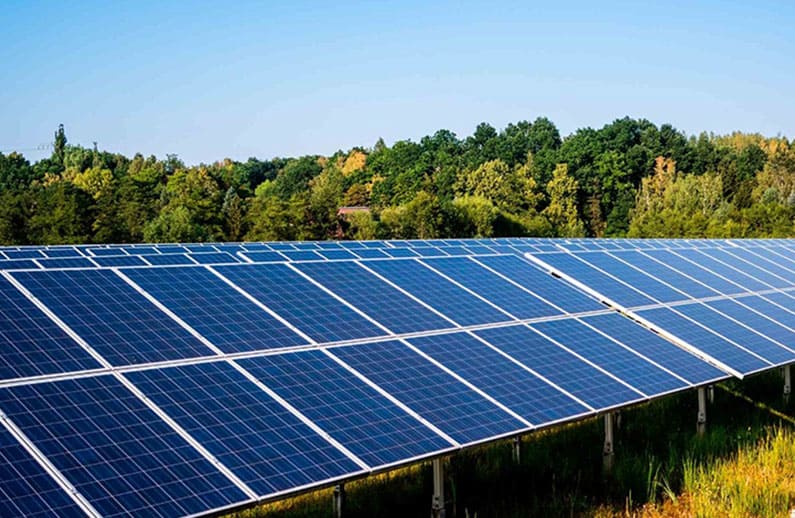太阳能电池板越多越好还是电池越多越好?
Aug 04, 2025
在设计太阳能系统时,最常见的问题之一是:应该投资更多太阳能电池板还是更多电池?答案取决于您的能源使用习惯、当地的光照条件、系统目标(例如,离网还是并网)以及预算。虽然这两个因素对于太阳能效率都至关重要,但了解它们的作用将有助于确定适当的平衡。太阳能电池板起什么作用?太阳能电池板是您系统中的核心能源来源。单晶硅太阳能电池板或 580W 双面太阳能电池板等设备会在白天将阳光转化为直流电。这些太阳能电池板的效率、输出功率和成本各不相同。单晶太阳能电池板 是最高效的,转换率为 19%–23%。它们在高温和弱光条件下表现良好,使其成为空间有限的住宅屋顶的首选。 另一方面,580W 双面太阳能电池板具有双面优势——正面捕捉直射阳光,背面捕捉反射光——可产生高达 能源效率提高 15% 与理想条件下的传统单面面板相比。太阳能电池板输出示例 (假设每天有 5 个高峰日照小时)面板类型 额定功率每日能量输出(千瓦时)所需表面积(平方米)单晶硅面板400瓦2.0 ~1.9580W双面组件 580瓦 2.9–3.3~2.3 太阳能电池有什么作用?太阳能电池板只有在阳光充足时才能工作。夜间或停电时,您的房屋依靠储存的电力运行。这时,电池——就像一个 锂太阳能电池-进来。与老式铅酸电池不同,锂电池充电速度更快、使用寿命更长(5,000 次以上循环),并且可用容量更高。它们可以储存白天产生的多余电能以备后用,提供可靠性和备用电源,并且在许多情况下,与智能逆变器配合使用时还能节省电费。标准的 10 kWh 锂太阳能电池可以为以下设备供电:冰箱里20-24小时最多可使用 2 天的 Wi-Fi、笔记本电脑和灯光长时间停电期间的必要电路但它们本身并不发电,只是储存能量。所以,如果你的太阳能电池板发电量不够,再多的电池也帮不上什么忙。 何时添加更多太阳能电池板如果符合以下条件,那么增加太阳能电池板通常是更好的投资:您的白天能源需求很高(例如,在家工作、电热水器、暖通空调使用)你想尽可能减少水电费你的电池经常电量不足,表明白天充电不足您计划在未来扩大能源使用(电动汽车充电、热泵安装)例如,添加一些 580W双面太阳能电池板 每天可以额外发电 2-3 千瓦时。一个月下来,相当于 60–90 千瓦时,无需消耗存储的电池电量即可满足您所有的照明和制冷需求。 何时添加更多电池在以下情况下,增加电池存储是更明智的举措:您经常遇到停电或电网不稳定的情况您的目标是实现完全的能源独立(离网生活)你的太阳能电池板产生的能量已经超过了你白天所需的能量您所在地区适用分时计费或需求费用 添加额外的锂太阳能电池可以让您将更多的能源从白天转移到晚上使用,如果夜间电网电价较高,则可以节省 30% 以上的电费。成分 平均价格范围(美元) 寿命 主要优势 单晶硅面板每块面板 180–250 美元 25至30岁 效率高,输出可靠580W双面组件 每块面板 250–320 美元 30多年 更高的输出,双表面增益锂太阳能电池5,000–8,000美元(10千瓦时)10至15年高存储、快速充电/放电 太阳能电池板的投资回收期往往是 更短,因为它们可以立即减少您对电网电力的依赖。电池在备用安全性和时移优势方面具有长期价值,但初始成本较高。 如何找到正确的平衡没有通用的答案,但这里有一个简单的框架:从太阳能电池板开始,在白天产生尽可能多的太阳能。当您持续产生过剩能量并希望将其储存起来以备非高峰时段或停电时使用时,请添加电池。在扩展系统之前,请先监控系统实时数据 1-2 个月。如果您的电池总是在中午之前充满电,那么您可能需要增加电池数量。如果到早上电量就耗尽,那么您可能需要增加电池板容量。 您可能还会考虑 混合逆变器系统允许随着能源需求的变化对面板和电池进行模块化扩展。


